( English version at the bottom of the page )
Une version fictive de reconnaissance basse ou haute altitude . Trois membres d'équipages , deux pods équipés de camera et deux missiles antiradars .
En 1957, Savitskiy, le commandant de la chasse de la PVO, suggéra à Tupolev de concevoir un chasseur dérivé du prototype
du Tu-98, destiné à intercepter les bombardiers occidentaux, et protéger les vastes espaces désertiques de l'URSS.
Le projet, alors nommé en interne Tu-128, fut alors confié à Sergueï Yeger et lancé en fonds propres. Le 4 juin 1958, l'appareil
fut officiellement accepté par l'Union soviétique sous la dénomination officielle Tu-28.
En 1959, le projet échut à I.F. Nezval et présentait les caractéristiques suivantes : un rayon d'action de 1500 km, 2 membres
d'équipage, 2 turboréacteurs AL-7F-2, un radar RP-S Smertch opérant en bandes I et J ("Big Nose" pour l'OTAN), et 4 missiles
air-air K-80 (AA-3 "Anab" pour l'OTAN) capables d'atteindre une cible volant plus haut que leur lanceur. Ces deux derniers
éléments furent testés sur un Tu-104 modifié contre des drones. L'ensemble avion Tu-28/missiles K-80 formait le système Tu-28-80.
Le prototype effectua son premier vol le 18 mars 1961 aux mains de M. V. Kozlov et K. I. Malkhasyan. Il fut dévoilé en
juillet 1961 au public à Tushino et reçut l’appellation OTAN "Fiddler". 4 autres appareils de présérie, furent construits
et les essais se déroulèrent de 1961 au 13 juillet 1964, avec 799 vols. C'est en décembre 1963 que le système reçut la
désignation Tu-128S-4, l'appareil devenant le Tu-128 et le missile R-4. Les prototypes reçurent la désignation "Fiddler-A".
Les appareils de série (appelés à tort Tu-28P) reçurent la désignation "Fiddler-B".
La désignation officielle fut Tu-28 jusqu'en 1963, puis Tu-128.
L'appareil entra en service le 5 octobre 1965 au sein de la PVO, et 188 exemplaires furent construits de 1962 à 1970.
Cet appareil était capable d'intercepter une cible volant entre 8000 m et 21000 m à 2000 km/h, avec une vitesse maximale
en charge de 1665 km/h. Son radar avait une portée de détection de 50 km, d'acquisition de 40 km.
Une version d'entraînement, le Tu-128UT, fut mis au point. Celle-ci avait la particularité d'être triplace, et d'avoir un
nez abaissé. 4 prototypes furent essayés à partir de 1971 et 10 exemplaires de série furent produits.
Le troisième cockpit remplaçait le radar
Le Tu-128M fut lancé afin de donner des capacités supérieures d'interception au Tu-128. Cette fois, l'appareil devait
pouvoir intercepter une cible volant entre 500 et 25000 m, à 3000 km/h, et avoir une vitesse maximale en charge entre
2100 et 2400 km/h. Pour ce faire, on étudia un nouveau radar RP-SM Smertch-M et de nouveaux missiles R-4RM et
R-4TM (AA-5 "Ash" pour l'OTAN). Il emportait 4 de ces missiles, 2 à guidage radar et 2 guidés par infrarouge.
2 Tu-128 de série furent convertis en prototypes du Tu-128M.
Le premier d'entre eux décolla pour la première fois le 24 septembre 1970. Les essais durèrent jusqu'à ce que le Tu-128M
soit accepté le 28 juin 1979. Tous les Tu-128 furent alors modifiés à ce standard.
D'autres projets, désignés Tu-28A, Tu-28-80, Tu-28-100, Tu-138 et Tu-148 furent envisagés mais non menés à leur terme.
Au moins 5 régiments mirent en œuvre le Tu-128, 3 au sein de la 14e armée aérienne basée à Novossibirsk et 2 au sein
de la 10e armée aérienne basée à Arkhangelsk. 25 régiments devaient en être pourvus au départ. D'autre sources parlent
de 6 régiments, 3 d'entre eux protégeant la flotte du Nord, 2 déployés en Extrême-Orient et un dernier au Kazakhstan.
Il ne servit guère qu'à intercepter et détruire des ballons-espions envoyés par les Etats-Unis, et ne fut jamais exporté.
Il fut remplacé par les MiG-31 et Su-27 entre 1984 et 1988, et finalement retiré du service en 1992. Il reste le plus gros
et le plus lourd intercepteur jamais construit et semble avoir laissé une excellente impression à ses équipages.
Les Tu-128M survivants sont stockés au dépôt de Rzhev.
- Réacteur : touche 1 2 .
- Feux de navigation : touche 3 .
- Feu d'atterrissage : touche 4 .
- Aérofreins : touche 5 + vtol bas
- Parachute : touche 6 .
- Trim : Trim .
English version .
A fictional version of low or high altitude reconnaissance . Three crew members, two camera-equipped pods and two anti-radar missiles .
In 1957, Savitskiy, the commander of the hunt for the PVO, suggested to Tupolev to design a hunter derived from the prototype
Tu-98, intended to intercept Western bombers, and protect the vast desert areas of the USSR.
The project, then named internally Tu-128, was then entrusted to Sergei Yeger and launched in equity. On June 4, 1958, the aircraft
was officially accepted by the Soviet Union under the official name Tu-28.
In 1959, the project fell to I.F. Nezval and had the following characteristics: a range of 1500 km, 2 members
crew, 2 AL-7F-2 turbojets, a Smertch RP-S radar operating in I and J ("Big Nose" for NATO), and 4 missiles
K-80 air-to-air (AA-3 "Anab" for NATO) capable of reaching a flying target higher than their launcher. These last two
elements were tested on a modified Tu-104 against drones. The Tu-28 / missile K-80 aircraft set formed the Tu-28-80 system.
The prototype made its first flight on March 18, 1961 at the hands of Mr. V. Kozlov and K. I. Malkhasyan. It was unveiled in
July 1961 to the public in Tushino and received the NATO name "Fiddler". 4 other pre-production units were built
and the tests ran from 1961 to July 13, 1964, with 799 flights. It was in December 1963 that the system received the
designation Tu-128S-4, the aircraft becoming the Tu-128 and the R-4 missile. The prototypes received the designation "Fiddler-A".
Series devices (wrongly called Tu-28P) received the designation "Fiddler-B".
The official designation was Tu-28 until 1963, then Tu-128.
The apparatus entered service on October 5, 1965 within the PVO, and 188 units were built from 1962 to 1970.
This aircraft was able to intercept a target flying between 8000 m and 21000 m at 2000 km / h, with maximum speed
in charge of 1665 km / h. His radar had a detection range of 50 km, acquisition of 40 km.
A training version, the Tu-128UT, was developed. This one had the particularity to be triplace, and to have a
nose lowered. 4 prototypes were tested from 1971 and 10 copies of series were produced.
The third cockpit was replacing the radar
The Tu-128M was launched to provide superior interception capabilities at the Tu-128. This time, the camera had to
ability to intercept a target flying between 500 and 25000 m at 3000 km / h and have a maximum speed under load between
2100 and 2400 km / h. To do this, a new Smertch-M RP-SM radar and new R-4RM missiles were studied.
R-4TM (AA-5 "Ash" for NATO). It carried 4 of these missiles, 2 with radar guidance and 2 guided by infrared.
2 Tu-128 series were converted into prototypes of the Tu-128M.
The first of them took off for the first time on September 24, 1970. The tests lasted until the Tu-128M
was accepted on June 28, 1979. All Tu-128 were then modified to this standard.
Other projects, designated Tu-28A, Tu-28-80, Tu-28-100, Tu-138 and Tu-148 were considered but not completed.
At least 5 regiments implemented the Tu-128, 3 within the 14th Air Force based in Novosibirsk and 2 within
of the 10th Air Force based in Arkhangelsk. 25 regiments had to be fired at the beginning. Other sources speak
of 6 regiments, 3 of them protecting the Northern Fleet, 2 deployed in the Far East and one in Kazakhstan.
It served only to intercept and destroy spy balloons sent by the United States, and was never exported.
He was replaced by the MiG-31 and Su-27 between 1984 and 1988, and finally retired in 1992. He remains the biggest
and the heaviest interceptor ever built and seems to have left an excellent impression on his crews.
The surviving Tu-128M are stored at the Rzhev depot.
- Reactor: key 1 2.
- Navigation lights: key 3.
- Landing light: key 4.
- Airbrakes: key 5 + vtol down
- Parachute: key 6.
- Trim: Trim.
Specifications
Spotlights
- Tang0five 6.2 years ago
- JohnnyBoythePilot 6.2 years ago
General Characteristics
- Predecessor Tupolev TU 128 Fiddler
- Created On Windows
- Wingspan 47.1ft (14.4m)
- Length 67.2ft (20.5m)
- Height 14.5ft (4.4m)
- Empty Weight 24,211lbs (10,981kg)
- Loaded Weight 46,072lbs (20,898kg)
Performance
- Power/Weight Ratio 1.707
- Wing Loading 122.9lbs/ft2 (600.0kg/m2)
- Wing Area 374.9ft2 (34.8m2)
- Drag Points 6806
Parts
- Number of Parts 177
- Control Surfaces 7
- Performance Cost 936

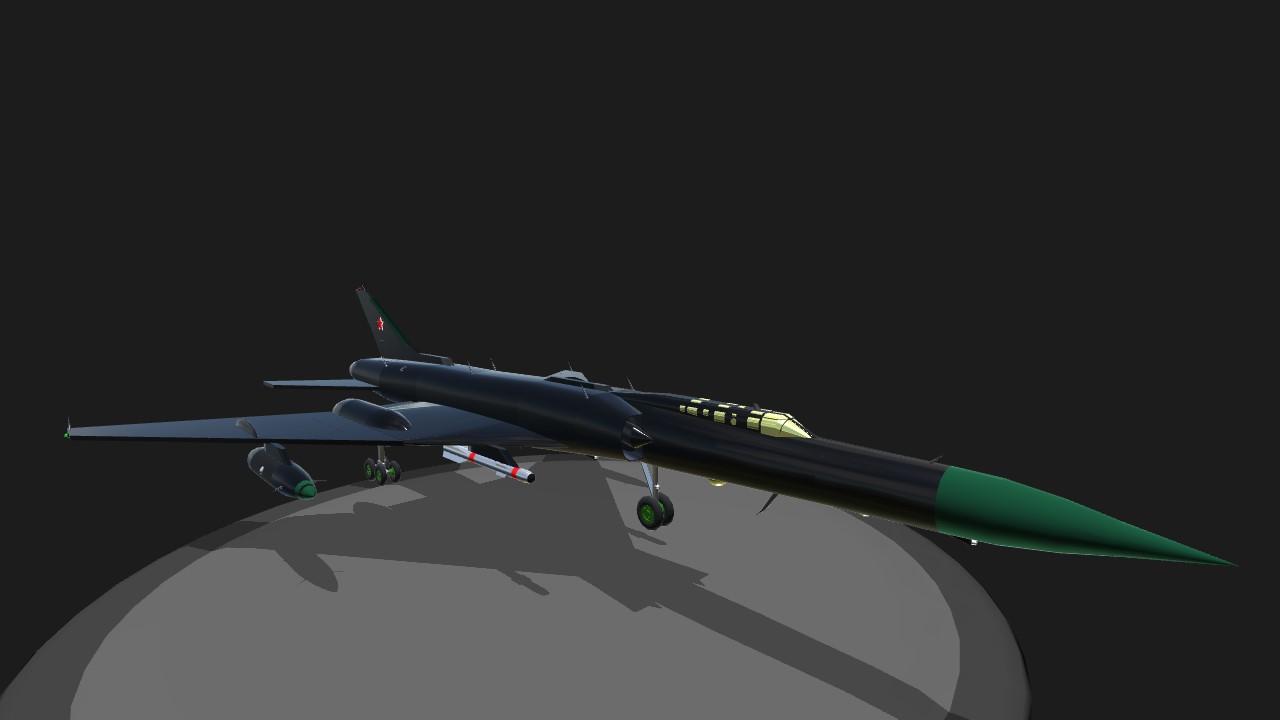

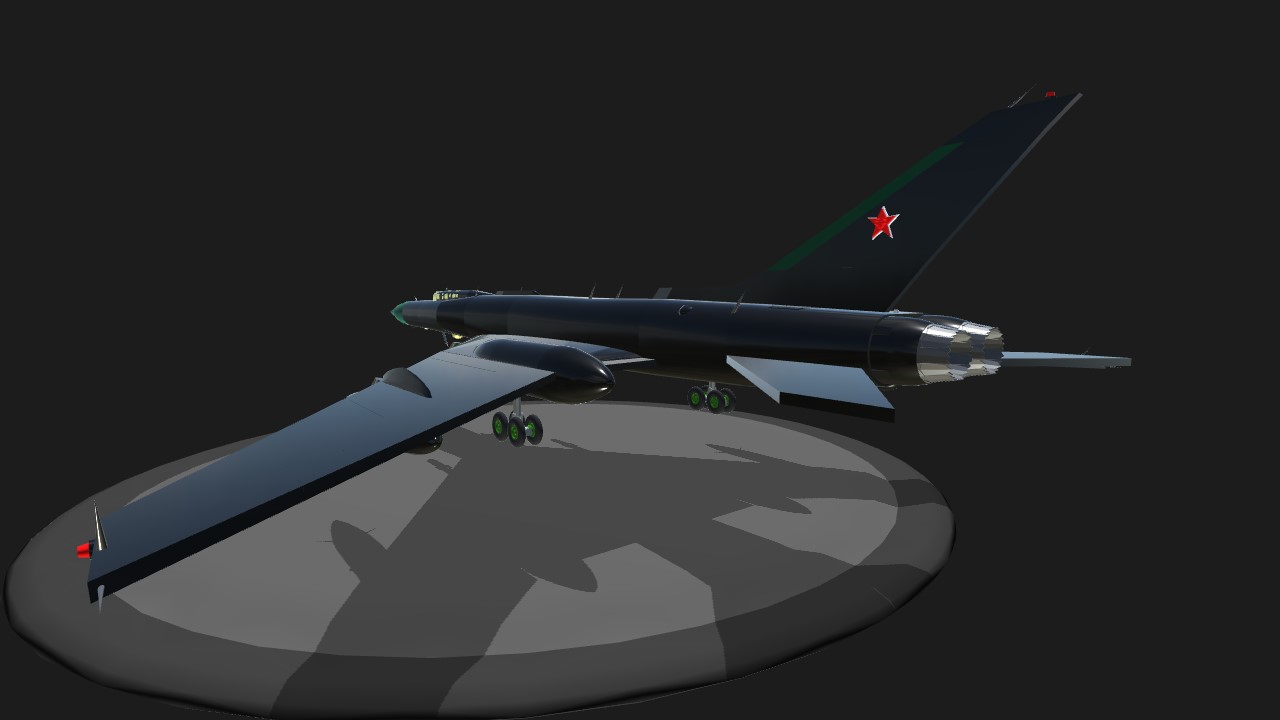
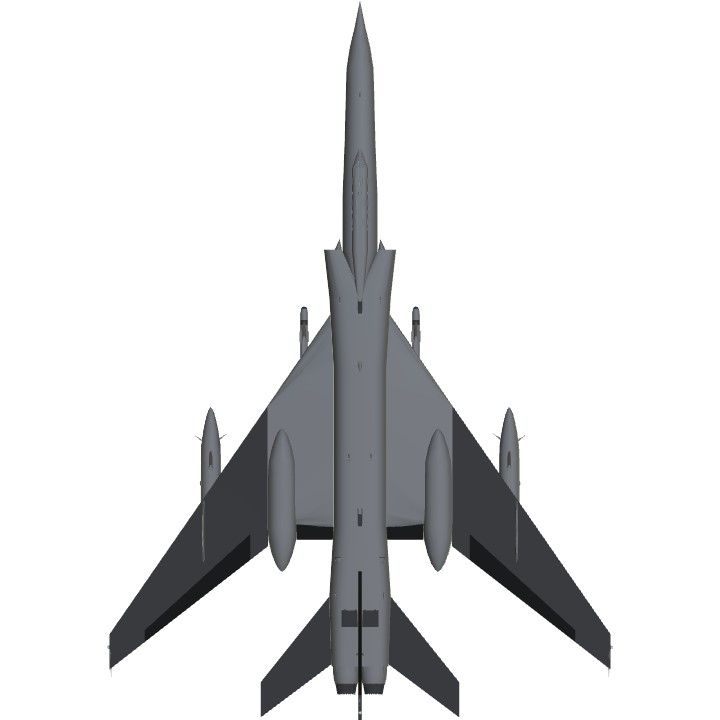
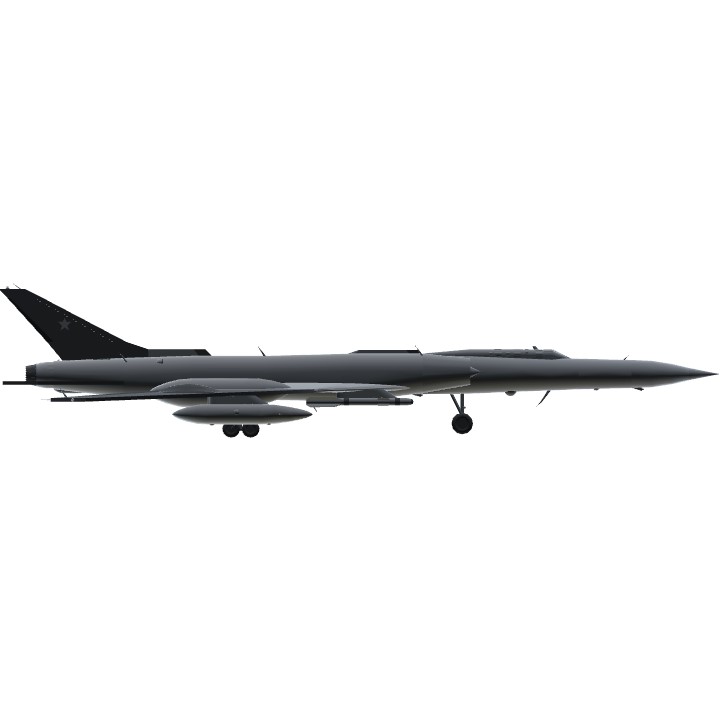
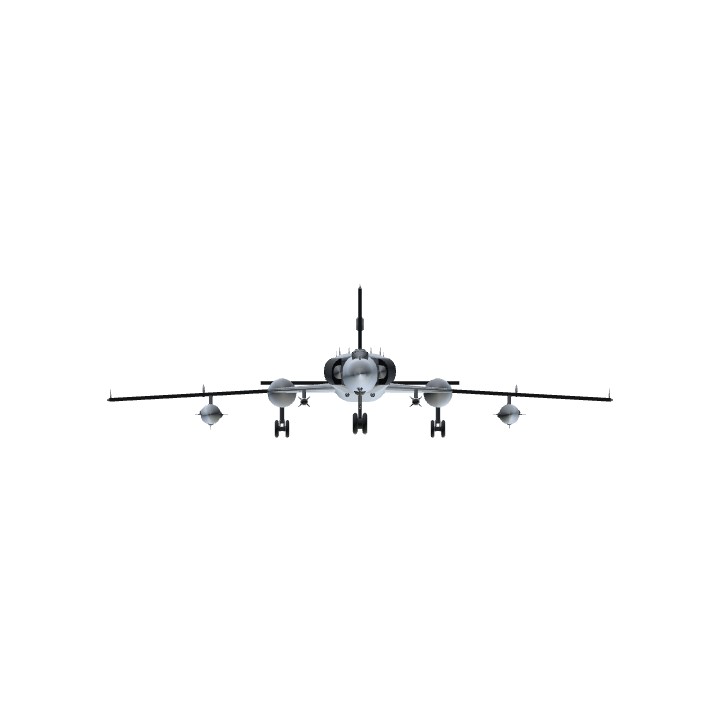
@XEPOH , Thanks for your upvote .
@Trainzo it's ok my friend.
@SCP1471 , thank for your upvote .
@Trainzo Yeah i saw it! Pretty neat!
@nadvgia , Hi, I do not know if you saw , I did too a Yak 28 .
@AircraftoftheRedStar , thank for you upvote , friend .
Very good. I like the camo wow! Can’t wait to see Yakovlev Yak-25.
@Trainzo
Np, nice plane!
@Trainzo oh my :D can't wait to see!
@Tang0five , No , just politeness for people who take the time to vote . Thank you for following me the friend .
@KerlonceauxIndustries , @JohnnyBoythePilot , tank for you upvotes and for
have spotlighted my plane .
@ChiChiWerx , @yoshicraze , @Sgtk , thanks for you upvotes .
@nadvgia , Yak 25 under construction .
@nadvgia , Why not one day .
@Trainzo no problem.
Will you do the Yak-25 one day? Cheers.
@nadvgia , thank for you upvote .
No dramas whatsoever! @Trainzo
@Tang0five , thank for have spotlighted my plane .
@T8flightcrafts , @T8flightcrafts , @RamboJutter , thanks for yours upvotes .
@Tang0five , @getorge , thanks for you upvotes , friends .